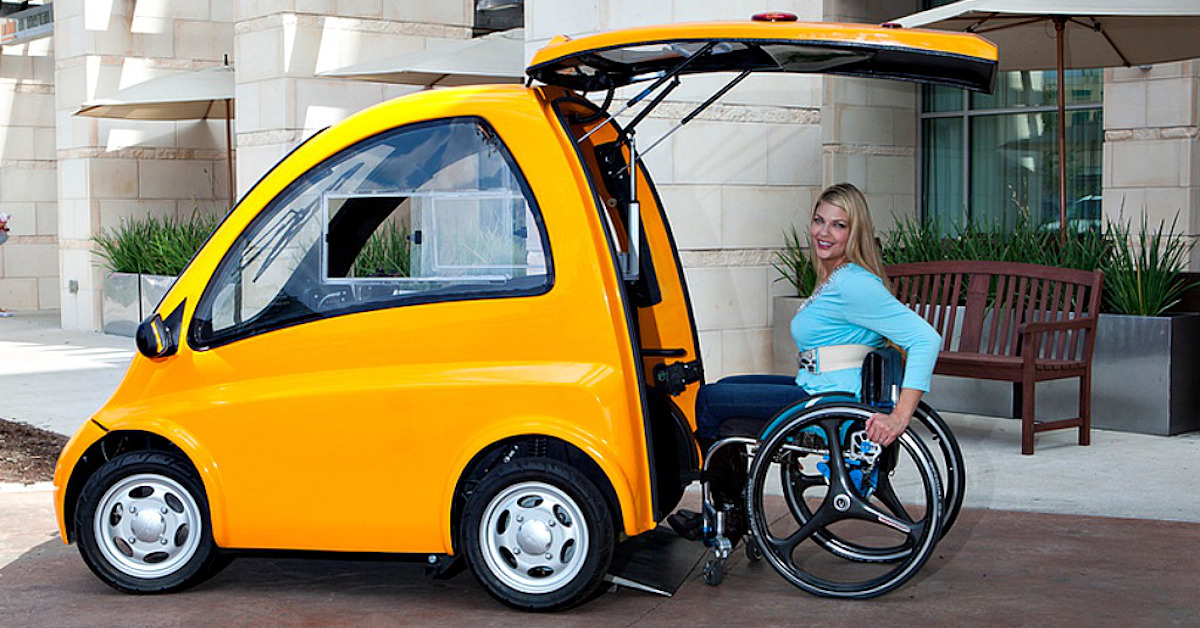The Kenguru Is The First Electric Car That Lets Drivers Operate It From Their Wheelchairs
Although the introduction of electronic cars marked a big step forward in mobility, we have yet to see one tailored specifically for individuals with impairments.
Fortunately, one man came through with Kenguru (pronounced “kangaroo”), an electric vehicle designed for wheelchair users by Istvan Kissaroslaki.
It’s been around for a long, but the gas-powered versions are prohibitively expensive, costing anything from $40,000 to $100,000. The cost of driving a Kenguru, on the other hand, is merely $25,000 for ambitious owners.

Although a Kenguru can only hold its driver, it is large and comfy. To enter, simply press a button to raise the back panel and lengthen the ramp.
Although the automobile lacks a trunk for simple access, I believe everyone will agree that it is a worthwhile trade-off.
This small electric vehicle is simple to operate. The driver can control it with handlebars instead of a steering wheel, similar to a motorcycle. Drivers can accelerate and brake without having to use their feet with these controls.
Kenguru also has a wheelchair-locking system that prevents the car from starting until the driver’s wheelchair is locked in place.
The Kenguru is classified as a scooter due of its small size and light weight, and thus does not require a driver’s license to operate.
Many people were impressed by Istvan’s life-changing invention. The Hungarian economy, however, collapsed, and the company lost its financing.
Until Stacy Zoern, an attorney from Texas, stepped into the scene, they had to rely on fundraising to keep their business solvent.

Stacy has spent her entire life in a wheelchair due to a neuromuscular problem. She needed a vehicle after her $80,000 customised van was totaled just a few months after she purchased it.
During her quest, she came upon Kenguru, but was disappointed to hear that it was only available in Hungary. After a few phone calls, though, a meaningful partnership was formed.
The company was relocated to Austin, Texas by Stacy and Istvan. Kengurus were entirely produced in the United States by 2014, and demand for them continues to grow.
“It’s been incredible.” “I mean, we’ve taken it to trade exhibitions all over the world—New York, Germany, Dubai—and people are ecstatic everywhere,” Stacy explained. “We have folks on the waiting list that want to buy them.” I get emails from all over the world from people who want to buy Kenguru from places I’ve never heard of.”
These cars have a top speed of 28 mph and a range of 43 to 68 miles, but they’re powerful enough to allow wheelchair users to go shopping or to a doctor’s appointment on their own.
Those who cannot afford the $25,000 Kenguru may be eligible for a discount. Kengurus are eligible for federal and state-level subsidies because they are electric vehicles. If the car will be used for work, certain people may be eligible for the “vocational rehabilitation incentive.”
The company’s biggest problem right now is money. They are currently unable to supply the increased demand for Kenguru devices due to a lack of funds. Despite their financial difficulties, Stacy and Istvan continue to come up with new ideas for how to improve the car’s design.

The team’s next goal is to develop a joystick that can fit larger wheelchairs. This design will allow drivers with less upper-body strength to operate the car, which is why Stacy has yet to drive her own Kenguru.
“Right now, we have dealers in Germany, Spain, and the United States who want to sign up,” she continued, “but we don’t have enough funding to construct more cars.” “As a start-up firm, it’s an unusual dilemma to have in that we can’t satisfy demand because we don’t have enough money to acquire the inventory to produce the cars.”
For wheelchair users, getting around has always been a challenge, but the Kenguru solves that problem.
In the video below, you can see the Kenguru in action.
Source: mypositiveoutlooks.com










